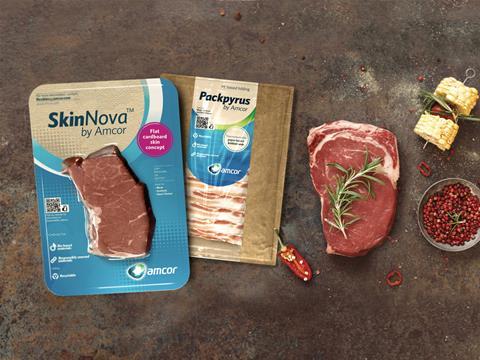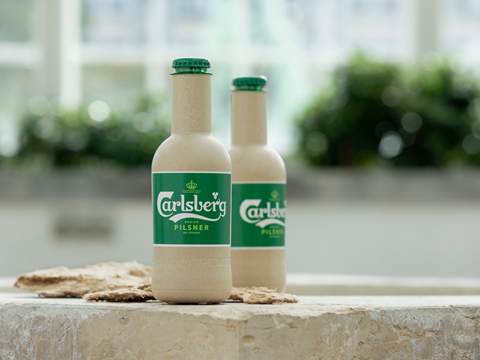Barrier properties in paper packaging have come on significantly in recent years – so much so that some would argue they can now equal plastics when it comes to product protection. But can they really ‘replace’ plastics? Victoria Hattersley spoke to a few industry insiders to explore this question.
There was a time when the answer to the above question would be simpler; not very far at all. But as those in the industry will know, advances in material properties for paper when it comes to product protection have been closing the gap as far as what this material can achieve.
But how far is ‘far enough’? Let’s not forget that the biggest barrier for paper packaging producers to achieving parity with plastics when it comes to product protection is just that – barriers. Even if a package is almost entirely paper-based, it will still need some kind of coating if it is to contain perishable products – and often these will be polymer-based.
The challenges with paper
“Paper is certainly an option where low or no barrier is needed,” says Gerald Rebitzer, Director of Sustainability, Amcor. “For packaging perishable or sensitive products, however, paper becomes a more complex option. This is because paper is inherently porous and hydrophilic (attracts moisture) and therefore only provides limited barrier. It is not comparable to plastics, which can provide a high oxygen and moisture barrier, so it’s unlikely that paper could fully replace plastics for all applications. To get around the limitations of paper for perishable products, it is usually combined with certain polymers or coatings to create a barrier, so the packaging will never be 100% paper.”

“The other challenge with paper is its ability to run on our customers’ existing packing machines, because paper has significantly weaker mechanical properties than plastic-based alternatives. Amcor is working with multiple partners along the full value chain to address both of these challenges.”
There is also the often-raised topic of the resource-intense paper-making process. Not only does it require billions of tonnes of water per year, it also requires substantial amounts of energy – contributing, according to some estimates, around 2% of the world’s total carbon footprint. It also, many argue, contributes to net deforestation and hence more carbon emissions, as the areas felled would have been storing CO2. Meanwhile plastics are cheap and far less resource-intensive to produce.
We’re aware of all these arguments, but it’s not quite so cut-and-dried, say paper advocates. “In terms of sustainability – recycling and CO2 wise – responsibly sourced paper packaging is superior to all plastics, due its renewable source and low or no use of fossil fuels in production,” says Patrik Bosander, Business Unit Director Packaging Solutions at BillerudKorsnäs on behalf of Packz. “There is still work to be done in further lowering the CO2 impact of paper production, and increasing the already comparatively high recycling rates of paper packaging. Responsible companies like BillerudKorsnäs and its peers have adopted, and got approval for, science-based climate impact targets to further reduce their CO2 footprints, and take value chain wide action to further increase collection and recycling rates of paper packaging.
“In terms of CO2 impact paper is a superior material to plastics. Two elements of the life cycle are decisive: raw material production and end of life. As long as the paper production is integrated with pulp production, and predominantly uses biofuel – which is the case for most northern European operations – paper comes out with comparatively very low CO2 footprint. And since the raw material is renewable, the net CO2 contribution from the inherent carbon is zero.”
What is technically possible
Finally, yet another major challenge to address is the development of a commercially viable coating technology that achieves the barrier properties needed without negative effects on repulping or fibre yield in the paper recycling stream.
In fact, some might argue that the biggest challenge goes beyond looking at what is technically possible from a material point of view, to what works in the recycling infrastructure – always a big question mark whatever material we are talking about.
“Due to the physical and chemical properties of paper, the biggest challenge is a lack of moisture vapour barrier,” says Gerald Rebitzer. “To create the barrier, paper is often combined with polymers, but then care needs to be taken that the finished packaging can in fact be recycled in standard paper facilities.
A major challenge is to have recycling streams available for new developments in paper packaging. In order to give paper the required barrier for perishable products, it must be combined with other materials or coatings, however acceptance of these packaging innovations in current recycling streams is still an open question. The constraint is not what’s technically possible to produce, but what can be recycled today.”
As part of its paper packaging development process, Amcor is studying the ‘repulpability’ of its newly developed paper-based structures to make sure a maximum amount of fibre is recovered during the recycling process. This requires proper paper selection and the use of polymers/coatings that do not interfere with the recycling process. This work is currently being done by the Amcor R&D team along with the help of external partners.

The search for solutions
But as they say: never say never. Many companies are as we speak exploring ways to approach these various challenges. Many of our regular readers will already have heard about Carlsberg’s mission to create the world’s first ‘paper’ beer bottle made from sustainably sourced wood fibres that is both 100% biobased and fully recyclable. To date it has created two promising research prototypes of the ‘Green Fibre Bottle’: One uses a thin recycled PET polymer film barrier, and the other a 100% bio-based PEF polymer film barrier. These prototypes will be used to test the barrier technology, although Carlsberg has stated its ambition is to achieve a 100% bio-based bottle without polymers. We’ve been following this story avidly and will continue to do so.
We also recently reported on a plastic-free cartonboard packaging solution developed by AR Packaging, which is currently being used by the Bel Group for its Boursin cheese range. The ‘Safeboard’ solution has made it possible for Bel to move away from the use of PE-coated cartonboard - equivalent, claims AR, to a reduction of more than 35 tonnes of plastics per year.
However, even so Ralf Mack, Innovation Director at AR Packaging, does stress that this does not mean a perfect plastic-free solution has been found for all sensitive products. Like Gerald Rebitzer, he tells us that for these products, a dedicated barrier lamination will still be necessary – at least for the foreseeable future – to ensure resource efficiency.
“Yes, flexible barrier material with plastic layers will remain essential for today’s and tomorrow’s packaging, but it will be more recyclable and precisely tailored for collection, sorting and recycling. It will also be increasingly available as based on materials from renewable source.”
Another company that has joined the paper-based drive is Toppan Printing, wits its new paper-based version of the tube pouch. According to Toppan, this new product maintains the tube pouch’s functionality while demonstrating ‘even better environmental performance’ by using a paper-based material for the body – creating, it says, a 50% reduction in plastic volume.
More generally, there are other exciting prospects on the horizon. “Vacuum deposition of SiOx and AlOx looks promising from a barrier perspective, as does a number of nano-cellulose developments,” says Patrik Bosander, Business Unit Director Packaging Solutions at BillerudKorsnäs who is also speaking on behalf of Packz collaborative network. “Nearer to market is dispersion coating of barrier materials, where BillerudKorsnäs has made great progress recently. I am very pleased with the moisture barrier properties that we have reached, and there will be a market launch related to this later this year.”
More to come
So can paper replace plastics? No, not yet – but its possibilities for barrier protection, as we have seen, are much greater than before.
There is more to come, too: “We will hopefully see cellulose based materials with appropriate barrier properties launched within the next few years,” says Patrik Bosander. There has, for example, been growing research interest in nanocellulose technology which is non-toxic, biodegradable and biocompatible with few to no adverse effects on the environment or human health.
“Having said that, I do think it is too simplistic to see the issue in terms of either/or. There will, for a foreseeable future, be for example certain food stuff that needs plastics packaging. But there is a lot of unnecessary plastic packaging out there, and that we want to help CPG brand owners and retailers to replace with better, paper based, packaging alternatives.”
But finally, let’s not forget that as much as paper manufacturers are working on ways to enhance barrier properties, plastics producers are doing the same the chemical level when it comes to improving recyclability. PEF is just one polymer we have been hearing about – a 100% biobased polymer which, if introduced to the market, could prove to be a real alternative to conventional petroleum-based plastics.
The answer, perhaps, is not as simple as replacing one material with another, but employing the best material for each individual case. This requires all members of the supply chain to work as a coherent whole – something we are closer to than ever before with initiatives such as CEFLEX, the New Plastics Economy and many more besides.












